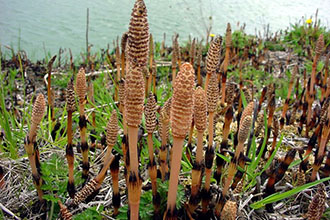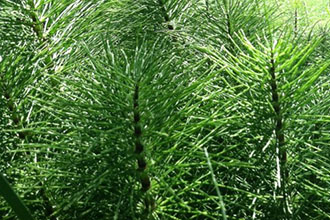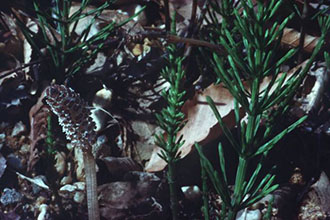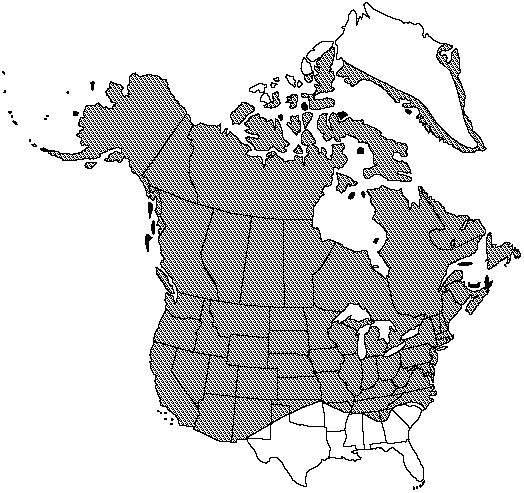USFS Plant Database
Field horsetail is a facultative wetland species. Field horsetail occurs in woods, fields, meadows and swamps, and moist soils alongside streams, rivers, and lakes, and in disturbed areas...Field horsetail is an early colonizer of moist, primary successional sites created by glacial retreat...Field horsetail is present in both seral and climax communities; its presence is largely dictated by edaphic conditions rather than shade or other factors. Field horsetail is an early colonizer on floodplain deposits. These communities are often destroyed by flooding before beingcan stabilized by willow establishment.
Native Americans and early settlers used tea made from field horsetail as a diuretic. Field horsetail was used as a cough medicine for horses. Dyes for clothing, lodges, and porcupine quills were made from field horsetail. It was used for scouring and polishing objects. The young shoots were eaten either cooked or raw.
The accepted scientific name for field horsetail is Equisetum arvense L. Fernald listed E. a. var. boreale (Bong.) Ledeb., a northern variety. There are a number of named forms that are not accepted by most authors as true forms; they may be growth variants that depend on environmental conditions and are not sufficiently distinct to warrant taxonomic recognition.
Field horsetail is abundant in many spruce communities, including white spruce (Picea glauca), black spruce (P. mariana), blue spruce (P. pungens), and Engelmann spruce (P. engelmannii). In Alberta and British Columbia, other common understory species in the white spruce communities in which field horsetail is abundant include prickly rose (Rosa acicularis), honeysuckle (Lonicera involucrata), bunchberry (Cornus canadensis), twinflower (Linnea borealis), naked miterwort (Mitella nuda), and mountain fern moss (Hylocomium splendens). (Plant Database)



